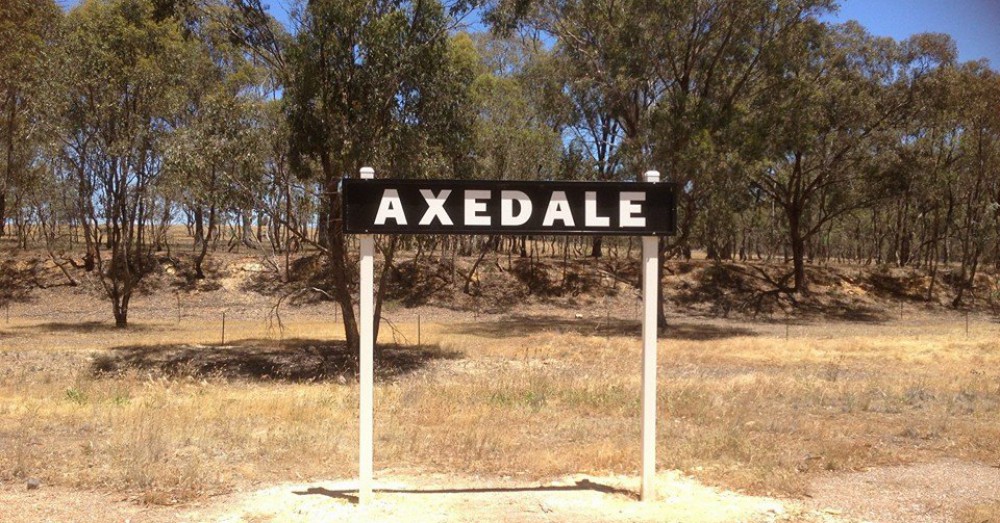From: Axedale Antics, December 1995, Edition 92
Axedale Hall 50 Years of Service
As early as the mid 1930s, meetings were held with the view of constructing a new hall that would service the district, and replace the older building then in use.
In the minutes of a meeting held 26 April 1939, it is recorded that a letter was received from Mr. R.B. Brennan, Strathfieldsaye Shire Secretary, stating that the shire council had decided to grant the committee’s request for hall plans and transfer of building site. It was moved by Cr. Mill and seconded by Mr. Lynch that the committee approve of a plan of 60 feet by 40 feet dancing space and Shire Engineer Mr. Flight submit the plans accordingly.
At a meeting held 14 June 1939, Mr. Flight reported to the committee that the estimated cost of the new hall would be 1,141 pounds.
On 19 October 1943, the committee requested the Shire of Strathfieldsye to make application to Minister of Public Works for a grant of 600 pounds on a 2 for 1 basis, and on 27 September 1944, a grant of 600 pounds was received.
On 29 March 1944, Mr. Drake donated to the committer Blocks 6 and 7, High Street, Axedale, on condition that the land would definitely be used for the construction of a new hall. The hall was constructed by builder J.J. Moran and at a meeting on 08 August 1945, Shire Engineer, Mr. S. Power reported a final cost of 1374 pounds, at the same meeting it was moved by Mr. McKenzie and seconded by Cr. Mill the committee issue 5 year debentures, minimum of one pound with an interest rate of 2.5% per annum.
The first recorded event to take place in the new hall was the drawing of the 1945 Melbourne Cup Sweep on 01 November 1945. Sweeps were run to aid funding. Sports days were held at the recreation reserve to also aid funding and these were very popular events and drew large crowds. The new hall was officially opened on 05 December 1945 and to mark the occasion a grand opening ball was held. The first Debutante Ball took place on 28 December 1945.
The younger set was formed on 16 April 1946, with monthly meetings and games nights.
On 28 June 1946, the district welcomed home it’s returned service men and women and unveiled the honour roll.
The hall was a very popular place with dances and halls drawing very large crowds, special buses would run from Bendigo and Heathcote. The old generating plant was removed from service when SEC power became available in the early 1950s.
On 05 July 1967, the Axedale Indoor Bowling Club applied to committee to hold indoor bowls on Saturday nights, and continues to this day.
In recent times, the hall has been upgraded to include a Kindergarten and supper room and kitchen rebuilt.
The hall has served the community well, and will continue to do so. It’s 50th birthday will be marked on New Year’s Eve, with an old time dance, in the style of the 1940s era. Those who made their debut 50 years ago, on 28 December 1945, will be invited guests. Hope to see you there.
Peter R. Dunlop, Chairman
Axedale Hall Committee
Axedale Antics, Decemberr 1995, Edition 92.


SHIRE OF STRATHFIELDSAYE
AXEDALE PUBLIC HALL
This stone was laid by
THE HON. J.H. EDENHOP M.L.C
MINISTER OF PUBLIC WORKS
on the 30TH DAY OF JUNE 1945
????
©2021 copyright. All rights reserved axedalethenandnow.com









